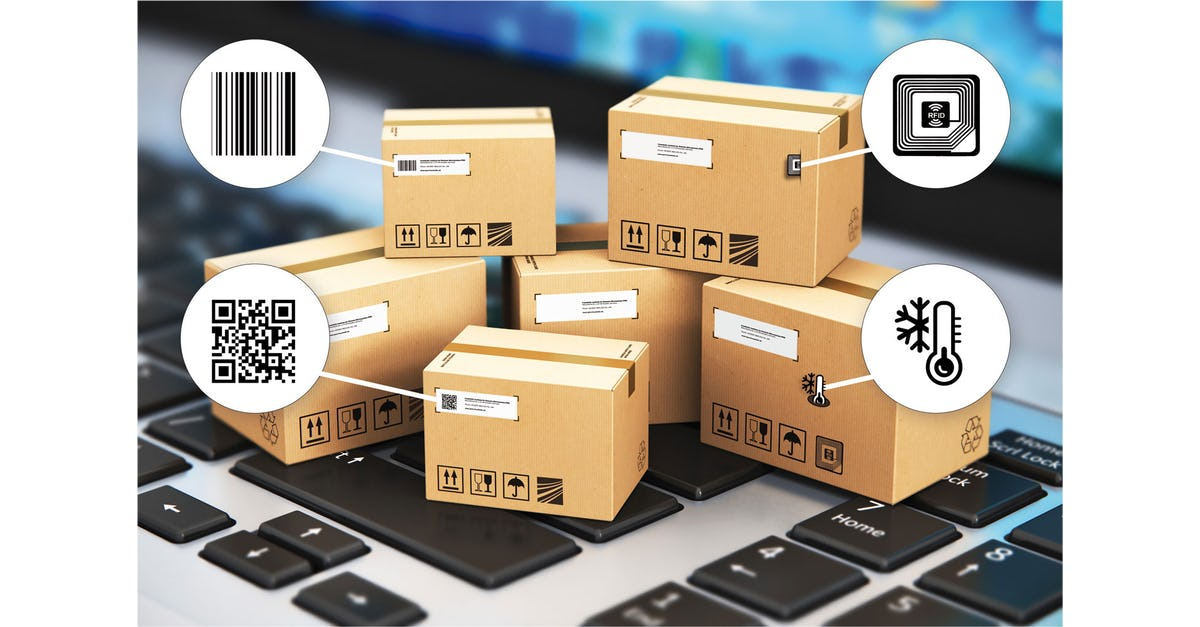Comments
- No comments found

In a world where traditional packaging methods are becoming outdated faster than dial-up internet, the realm of industrial packaging is undergoing a profound transformation.
Imagine a future where every package can communicate, track, and adapt in real-time to its surroundings. The integration of IoT and sensor technologies is not just a concept but a tangible reality reshaping how industries approach packaging solutions. Stay tuned to discover how these advancements are not only enhancing efficiency but also paving the way for a new era of smart packaging that is set to revolutionize the industrial landscape.
Enhanced supply chain visibility and real-time tracking with IoT and sensors.
Minimization of carbon footprint through eco-friendly smart packaging practices.
Improved product quality control and customer engagement.
Integration of sensor technology for optimized industrial packaging processes.
Smart packaging like fibc bags has swiftly emerged as a game-changer in the industrial sector. Companies are increasingly turning to smart packaging solutions to enhance efficiency and customer experience. By integrating technologies like sensors and RFID tags into packaging materials, businesses can track products throughout the supply chain, ensuring better inventory management and minimizing losses due to theft or damage. These innovations also enable real-time monitoring of factors like temperature and humidity, crucial for industries such as pharmaceuticals and food where product integrity is paramount.

Moreover, smart packaging goes beyond mere tracking. It can also provide valuable data insights that help companies optimize their processes and tailor their offerings to meet customer demands more effectively. For instance, analyzing consumer interaction with smart packaging can offer valuable information on usage patterns and preferences, enabling businesses to refine their marketing strategies. Overall, the rise of smart packaging signifies a shift towards more intelligent and responsive industrial practices, setting the stage for a more connected and efficient future.
As we explore the evolution of industrial packaging, the integration of IoT technologies is reshaping the way products are monitored and managed throughout the supply chain. By incorporating IoT devices into packaging, companies can gather real-time data on various aspects of their products, leading to improved efficiency, safety, and customer satisfaction. These smart packaging solutions enable better tracking of shipments, temperature control for perishable goods, and even tamper detection to ensure product integrity.
Benefits of IoT Integration in Packaging | Examples |
|---|---|
Enhanced supply chain visibility | RFID tracking systems |
Improved product quality control | Temperature sensors |
Efficient inventory management | Smart shelf technology |
Enhanced customer engagement | Interactive packaging labels |
The table above highlights some of the key benefits of IoT integration in packaging and provides examples of how these technologies are being utilized in the industry. As IoT continues to advance, the possibilities for smart packaging solutions are endless, revolutionizing the way products are packaged, shipped, and consumed.
With advancements in sensor technology, industrial packaging is undergoing significant enhancements in monitoring and data collection capabilities. Sensors are becoming more sophisticated, allowing for real-time tracking of various parameters such as temperature, humidity, pressure, and location. These advancements enable manufacturers to ensure the quality and integrity of their products throughout the supply chain.
The miniaturization of sensors has made it possible to embed them directly into packaging materials, providing a seamless and non-intrusive way to gather data. This integration of sensors into packaging allows for better visibility and control over the conditions in which products are stored and transported.
Moreover, sensor technology advancements have led to the development of smart packaging solutions that can actively communicate with other devices and systems. This interconnected network of smart packaging enables automated responses to changing environmental conditions, reducing the risk of product damage or spoilage.
Enhancing supply chain visibility involves implementing advanced tracking technologies that provide real-time insights into the movement and status of products. By integrating IoT sensors and RFID tags into packaging, you can monitor your products at every stage of the supply chain. These technologies enable you to track the location, temperature, humidity, and even potential tampering of your goods. With this increased visibility, you can proactively address any issues that may arise, such as delays, damages, or disruptions in transit. Furthermore, by leveraging data analytics and machine learning algorithms, you can optimize your supply chain operations, improve efficiency, and reduce costs. Real-time monitoring allows you to make data-driven decisions quickly, enhancing overall transparency and accountability across your supply chain network. With enhanced supply chain visibility, you can build trust with your customers, ensure regulatory compliance, and ultimately create a more resilient and agile supply chain ecosystem.
Implementing real-time tracking capabilities in industrial packaging revolutionizes the way products are monitored and managed throughout the supply chain. With the integration of IoT and sensor technologies, you can now track your shipments with unprecedented precision and efficiency. By utilizing real-time tracking, you gain immediate visibility into the location and condition of your products at any given moment. This level of insight allows you to proactively address any issues that may arise during transit, ultimately enhancing the overall supply chain performance.
![]()
Real-time tracking capabilities enable you to optimize route planning, monitor temperature and humidity levels, and ensure timely delivery of goods. By receiving instant updates on the status of your shipments, you can make informed decisions to streamline operations and improve customer satisfaction. Moreover, the ability to track products in real-time enhances security measures, reducing the risk of theft or tampering during transportation.
Incorporating real-time tracking into industrial packaging not only increases efficiency but also provides a competitive edge in today's fast-paced market. Stay ahead of the curve by leveraging these innovative technologies to transform the way you manage your supply chain.
To enhance the reliability of your products, consider adopting advanced quality assurance measures. Implementing these measures can help you ensure that your products meet the highest standards and exceed customer expectations. Here are some strategies to improve your product quality assurance:
Utilize IoT Sensors: Incorporate IoT sensors into your packaging to monitor factors like temperature, humidity, and shock during transportation, ensuring the product remains intact.
Implement Machine Learning Algorithms: Use machine learning algorithms to analyze data collected from sensors in real-time, allowing you to identify potential issues before they escalate.
Conduct Regular Quality Audits: Schedule routine quality audits along the supply chain to identify any deviations from the set quality standards and address them promptly.
Invest in Automated Inspection Systems: Deploy automated inspection systems to detect defects or anomalies in the packaging or product, reducing the likelihood of faulty products reaching the market.
Considering sustainability in packaging has become a critical focus for many industries seeking to reduce environmental impact. Companies are increasingly implementing various initiatives to minimize their carbon footprint and promote eco-friendly practices in packaging. One common strategy is the use of biodegradable materials instead of traditional plastics, which can take hundreds of years to decompose. By opting for biodegradable options, businesses can significantly reduce the amount of waste that ends up in landfills or oceans.
Furthermore, the concept of reusable packaging is gaining traction as a way to minimize the environmental impact of packaging materials. Encouraging customers to return and reuse packaging not only reduces waste but also fosters a culture of sustainability among consumers. Additionally, some companies are exploring innovative packaging designs that require fewer materials or utilize recycled resources, further contributing to sustainability efforts.
Smart packaging offers numerous advantages for industries seeking to enhance efficiency and customer experience. When implemented effectively, smart packaging can bring about the following benefits:
Real-time Tracking: Sensors embedded in smart packaging enable real-time tracking of products throughout the supply chain, allowing for better inventory management and reduced risks of loss or theft.
Enhanced Safety: Smart packaging can incorporate features like temperature monitoring, ensuring that perishable goods remain fresh and safe for consumption, thus reducing waste.
Improved Customer Engagement: Interactive packaging equipped with QR codes or NFC tags can provide customers with access to product information, promotions, or even games, enhancing their overall experience.
Supply Chain Optimization: By providing data on factors like storage conditions and transit routes, smart packaging helps in optimizing supply chain processes, leading to cost savings and improved efficiency.
These benefits showcase how smart packaging is revolutionizing industries by offering innovative solutions that cater to the evolving needs of businesses and consumers alike.
Industrial packaging is poised to undergo significant transformations in the upcoming years, driven by technological advancements and changing consumer demands. One of the future trends in industrial packaging is sustainability. Consumers are increasingly concerned about the environmental impact of packaging materials, pushing industries to adopt eco-friendly solutions like biodegradable or compostable packaging. Another trend is smart packaging, integrating IoT technology to provide real-time tracking, monitoring, and even interactive features. This allows for better inventory management, quality control, and enhanced customer engagement. Personalization is also on the rise, with companies using data analytics to tailor packaging designs to specific customer preferences. Additionally, automation and robotics are set to streamline packaging processes, reducing human labor and increasing efficiency. Lastly, there is a growing focus on safety and security, with innovations such as tamper-evident seals and anti-counterfeiting measures becoming more prevalent in industrial packaging solutions. As these trends continue to evolve, industrial packaging will become more sustainable, efficient, and customer-centric.
Leave your comments
Post comment as a guest